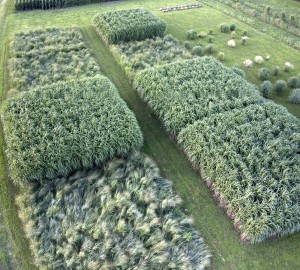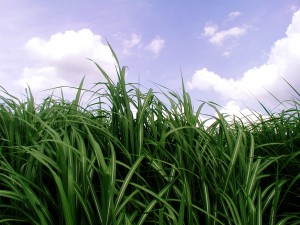Miscanthus has been much talked about in the past year as a strong contender as a feedstock for advanced ethanol. Yet scientists from the University of Illinois are cautioning that not enough is known about the feesdstock’s pros and cons to call it a viable option for ethanol.
The potential of miscanthus and switchgrass has been studied extensively by researchers Greg McIsaac, Mark B. David and Corey A. Mitchell and their latest findings will be published in the upcoming paper, “Miscanthus and Switchgrass Production in Central Illinois: Impacts on Hydrology and Inorganic Nitrogen,” that will appear in the September-October edition of the Journal of Environmental Quality.
 The study focused on two important environmental concerns surrounding biomass: water quantity and nitrogen “leeching”. When compared to corn, soybeans and switchgrass, researchers found that miscanthus used substantially more water but leeched less nitrogen.
The study focused on two important environmental concerns surrounding biomass: water quantity and nitrogen “leeching”. When compared to corn, soybeans and switchgrass, researchers found that miscanthus used substantially more water but leeched less nitrogen.
“We found that Miscanthus tends to dry out the soil much more than corn, soybeans, or switchgrass later in the growing season,” said Greg McIsaac, environmental scientist in the College of Agricultural, Consumer and Environmental Sciences. “This would likely reduce runoff, stream flow and surface water supplies later in the summer and in early fall, when streams are typically at their lowest. It could reduce the amount of water available to those who are downstream in late summer and early fall.”
The study also looked at nitrogen loss, or how it “leaches” into the ground water and travels. Opponents to corn ethanol have been very vocal claiming that the nitrogen from agricultural production is a major contributing factor to the “Dead Zone” in the Gulf of Mexico as well as in other areas of the ocean. (Other research has shown this is not the case.)
 In this case, researchers grew miscanthus and switchgrass using no fertilizer and discovered that is grew well without. They also determined that the two crops had much lower leaching than soybeans or fertilized corn.
In this case, researchers grew miscanthus and switchgrass using no fertilizer and discovered that is grew well without. They also determined that the two crops had much lower leaching than soybeans or fertilized corn.
“We did not apply fertilizer to Miscanthus or switchgrass because the study was designed to look at a low-input biofuel,” McIsaac said. “The results showed that you can get high productivity without fertilizing Miscanthus, at least for the first three to four years. It is likely that if you apply fertilizer to Miscanthus and switchgrass, there would be more leaching than what we saw in our study, with no application. But because of the root activity, I would expect fertilized Miscanthus and switchgrass to leach less than fertilized corn. To be certain, this needs further study.”
These results are just the tip of the iceberg and will guide future research in determining in more detail the pros and cons of the crops as well as learn which land areas are best suited for miscanthus and switchgrass.

